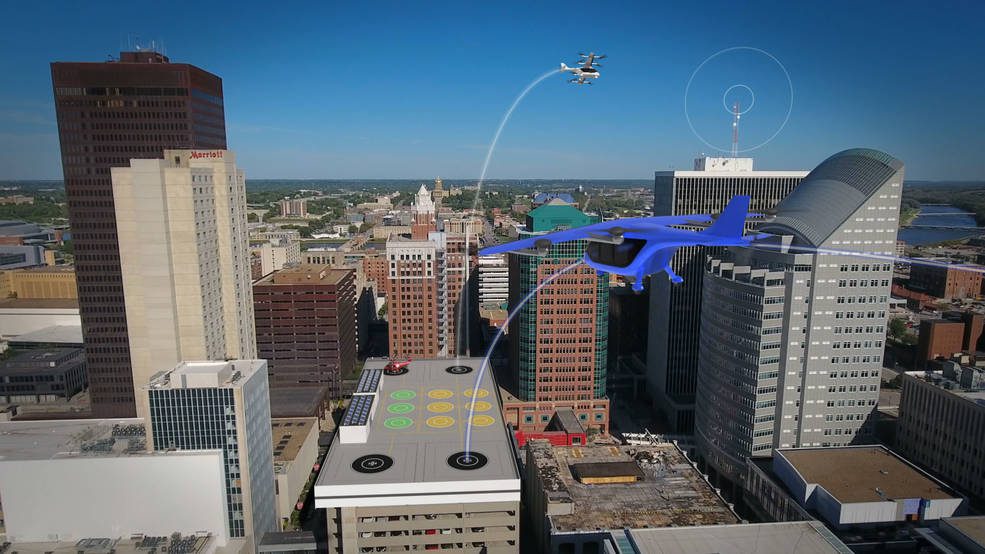“…In cities like Los Angeles or Atlanta, traffic often determines how early we wake up to travel to work, what time we plan to meet friends for dinner, or how long it will take to get to the airport. For trips between cities, a road trip to a relative’s house could take anywhere from four to six hours. NASA’s Advanced Air Mobility (AAM) mission is researching how the addition of AAM could cut traffic commutes, make travel more sustainable, and make road trips shorter.
AAM can help make travel more efficient. This could look like requesting an air taxi on a cellphone app instead of a rideshare service to take you to the airport. This could be a two-hour flight to grandma’s house instead of a six-hour drive on the highway. This could be daily commuter air taxis to takeoff from a community suburb vertiport and land on a city vertiport. AAM could also make traveling to work more affordable from a rural area into a city. With the addition of AAM, we would be using another dimension in the sky for travel below traditional aircraft and above cars, buses, or trains below.
Several projects supporting the AAM mission are working on different elements to help make AAM a reality. This includes work on automation, noise, vertiport and vehicle design, and airspace design to keep everyone safe while flying in the skies together. It is going to take an effort between government agencies, industry, and the public to build new highways in the sky.
NASA’s vision is to map out a safe, accessible, and affordable new air transportation system alongside industry partners, community partners, and the Federal Aviation Administration. Once developed, passengers and cargo will travel on-demand in innovative, automated aircraft across town, between neighboring cities, or to other locations typically accessed today by car…”
Teresa Whiting
NASA Armstrong Flight Research Center
